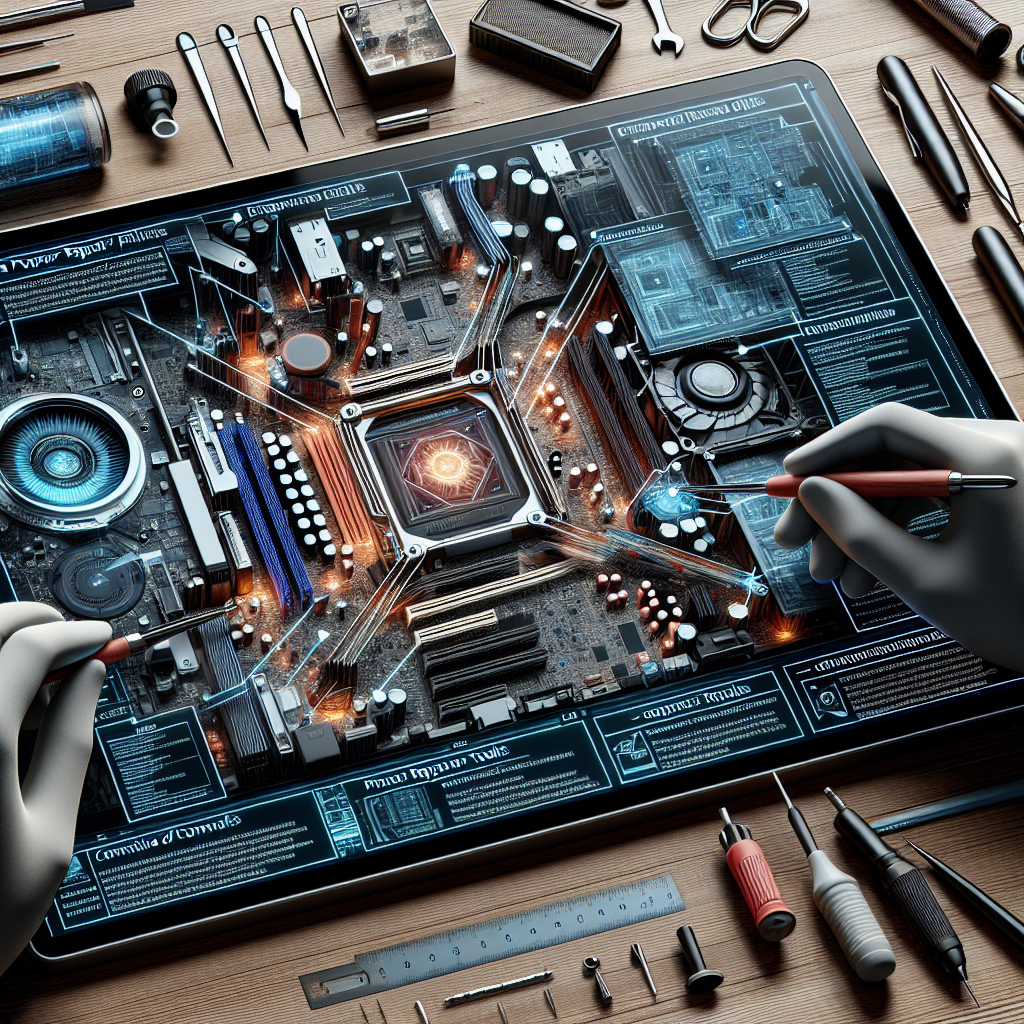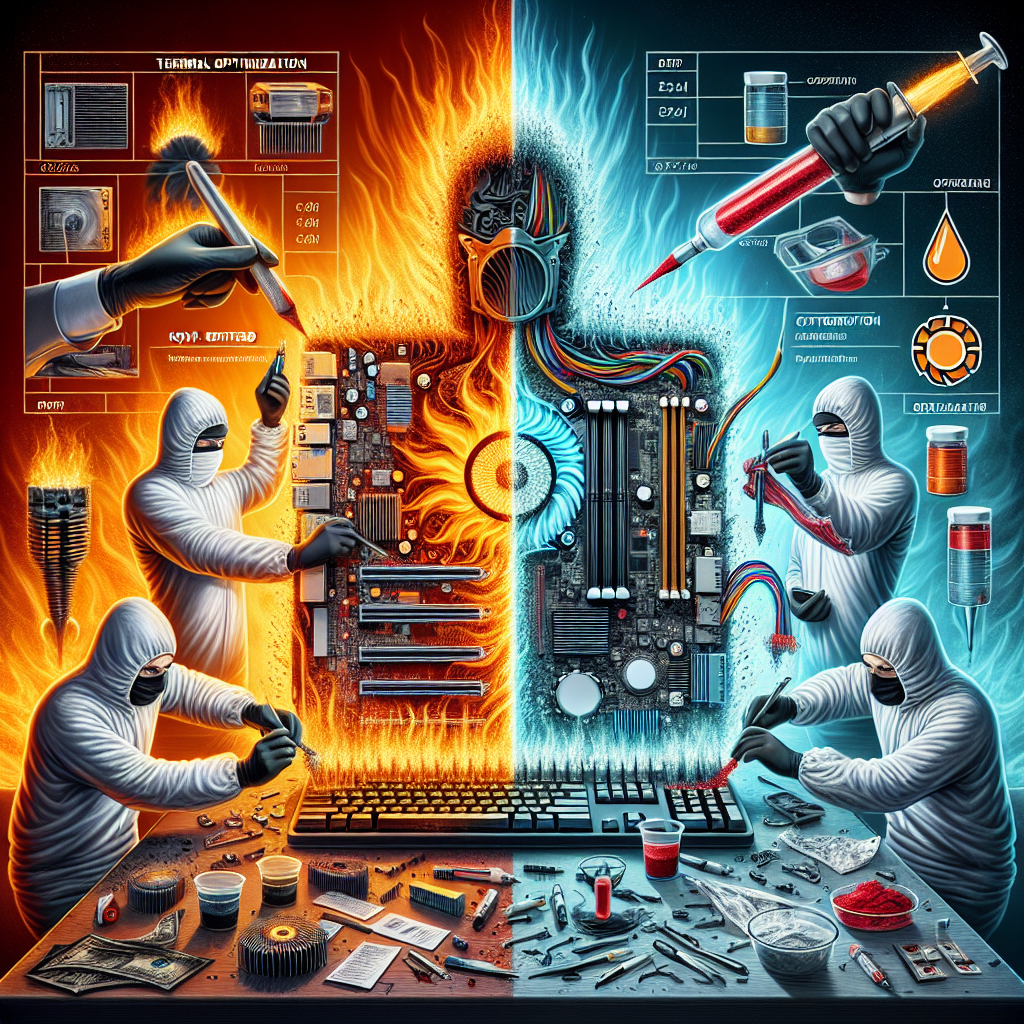Is Your Computer Problem Actually Making Things Worse?
Do you stare at your malfunctioning computer, wondering if your DIY repair attempt might cause more harm than good? You’re not alone. Computer repair pitfalls are surprisingly common, even among tech-savvy users. These critical mistakes often turn minor issues into costly disasters that could have been avoided.
A recent Stanford University Digital Library study shows that over 67% of DIY computer repair attempts result in additional complications or data loss. This startling statistic highlights why understanding common repair pitfalls is essential before opening that case or running that questionable software.
Let’s examine the 10 most dangerous computer repair mistakes and how you can avoid them with proven strategies from industry experts.
1. Skipping Proper Diagnosis Before Repairs
Many computer owners jump straight to solutions without correctly identifying the underlying problem. This approach is like a doctor prescribing medication without examining the patient.
Why this matters: Misdiagnosed issues lead to:
- Wasted time and money on unnecessary parts
- Unresolved underlying problems that continue to damage your system
- Potential voiding of warranties with unauthorized repairs
How to triumph: Before attempting any repair, systematically document all symptoms. Run diagnostic software to identify specific hardware or software failures. The National Institute of Standards and Technology (NIST) recommends creating a troubleshooting checklist that includes when the problem started, what changes were recently made, and any error messages you’ve encountered.
2. Neglecting to Back Up Data Before Repairs
Perhaps the most devastating mistake is starting repairs without securing your valuable data.
Why this matters: Even simple repairs can result in:
- Permanent data loss of irreplaceable photos, documents, and files
- Business disruptions occur when critical information becomes inaccessible
- Psychological stress from losing personal digital memories
How to triumph: Always create at least two backups before attempting any repair. Use an external hard drive for local backup and a secure cloud service for redundancy. According to MIT Technology Review, implementing the 3-2-1 backup strategy (3 copies, 2 different media types, 1 off-site) provides 99.9% protection against data loss during repairs.
3. Using Incorrect Tools or Parts
Computer components are precision-engineered and require specific tools and compatible parts.
Why this matters:
- Improper tools can damage sensitive components like motherboards and CPUs
- Incompatible parts waste money and may cause system instability
- Physical damage from incorrect tools often voids warranties
How to triumph: Research your specific computer model and required components before purchasing parts. Use anti-static wristbands when handling internal components, and invest in a proper computer repair toolkit rather than household screwdrivers. When in doubt, consult professionals at Mynians Technology Solutions at (407) 374-2782 for expert guidance on compatible components.

4. Ignoring Proper Safety Protocols
Computer repairs involve electrical components and potentially hazardous materials.
Why this matters:
- Risk of electric shock when working on plugged-in systems
- Potential fire hazards from improper component installation
- Exposure to harmful substances in batteries or older monitors
How to triumph: Always unplug your computer and disconnect all cables before opening the case. Wait at least 10 minutes after unplugging to allow capacitors to discharge. Remove jewelry and work on non-conductive surfaces. Google Search Central recommends following the manufacturer’s safety guidelines for each device model to minimize risks.
5. Overlooking Software Solutions for Hardware Problems: Another Computer Repair Pitfall
Many apparent hardware failures stem from software issues.
Why this matters:
- Unnecessary component replacements waste money
- Time lost troubleshooting the wrong issue
- Software corruption can mimic hardware failure symptoms
How to triumph: Before replacing any component, try software-based solutions like:
- Operating system updates and patches
- Driver reinstallation or updates
- System restore to a previous working state
- Boot into safe mode to identify software conflicts
6. Failing to Document Your Repair Process
Disassembling a computer without documenting your steps is a recipe for reassembly nightmares.
Why this matters:
- Complex systems may have dozens of screws and connections
- Component placement and cable orientation are critical
- Reassembly errors can prevent the system from functioning
How to triumph: Take photos at each stage of disassembly. Label cables and screws with masking tape or small bags. Create a written log of each step. This documentation becomes invaluable when putting everything back together and can save hours of frustration.
7. Applying Excessive Force During Repairs
Computer components are designed to fit together with minimal resistance.
Why this matters:
- Broken pins, cracked circuit boards, and snapped plastic mounts
- Expensive replacement costs for damaged parts
- Potential for system instability even if components appear intact
How to triumph: Follow the “if it doesn’t fit, don’t force it” rule. Research proper installation techniques through the manufacturer’s documentation. When installing RAM, CPUs, or expansion cards, ensure proper alignment before applying gentle, even pressure.
8. Computer Repair Pitfalls: Neglecting to Address Thermal Issues
Overheating is a silent killer of computer performance and longevity.
Why this matters:
- Thermal throttling reduces system performance
- Component lifespan decreases dramatically at high temperatures
- System crashes and unexpected shutdowns
How to triumph: Regularly clean dust from heat sinks and fans. Replace thermal paste on CPUs and GPUs every 2-3 years. Ensure proper airflow by organizing internal cables and maintaining appropriate fan configurations. According to ICANN security guidelines, maintaining proper operating temperatures can extend hardware lifespan by up to 40%.

9. Rushing Through BIOS/UEFI Configuration Changes
The BIOS/UEFI is your computer’s fundamental control system, and incorrect settings can render a system unbootable.
Why this matters:
- Changes may prevent the system from booting entirely
- Performance impacts from improper memory or CPU settings
- Security vulnerabilities from incorrect configuration
How to triumph: Research any BIOS changes thoroughly before implementation. Document current settings before making changes. Make only one change at a time to identify any negative impacts. Know how to reset BIOS to defaults via jumper or battery removal if problems occur.
10. Attempting Repairs Beyond Your Skill Level
Perhaps the most essential wisdom is knowing when to seek professional help.
Why this matters:
- Complex repairs require specialized knowledge and tools
- The cost of fixing DIY mistakes often exceeds professional repair costs
- Data recovery becomes more difficult after amateur recovery attempts
How to triumph: Honestly assess your skill level before attempting repairs. For mission-critical systems or valuable data, consult professionals. Mynians Technology Solutions specializes in advanced computer repair and data recovery, offering expert assistance when self-repair isn’t advisable. Contact them at (407) 374-2782 for professional computer repair services.
Client Success Story: From Disaster to Triumph
John, a small business owner in Orlando, attempted to upgrade his company’s server RAM himself. After the upgrade, the server wouldn’t boot, putting critical business operations at risk.
“I thought I’d save money by doing it myself, but I nearly lost our entire customer database,” John recalls. “Calling Mynians was the best decision I made. Their technician identified that I had installed incompatible memory modules and had damaged one of the DIMM slots in the process.”
Mynians repaired the physical damage, recovered all data, and implemented a robust backup solution. “What could have been a business-ending disaster turned into a minor inconvenience. I now have Mynians handle all our IT needs,” says John.
Frequently Asked Questions about Computer Repair Pitfalls
How do I know if I should attempt a computer repair myself?
Consider your technical knowledge, the complexity of the repair, and the value of your data. Simple upgrades like adding RAM or replacing a hard drive are often manageable with research, while motherboard or CPU issues typically require professional expertise.
What should I do if I’ve already made one of these mistakes?
To prevent additional damage, stop further repair attempts immediately. Document what you’ve done so far, and consult with a professional repair service like Mynians Technology Solutions at (407) 374-2782.
How much does professional computer repair typically cost?
Professional repair costs vary depending on the issue but typically range from $50 to $300. While this may seem expensive, it’s often more cost-effective than purchasing replacement parts for failed DIY repairs or losing valuable data.
Can software cause symptoms that appear to be hardware failures?
Yes, absolutely. Corrupted drivers, malware, or operating system issues can cause crashes, performance problems, and other symptoms that mimic hardware failures. Always rule out software issues before replacing components.
How often should I perform preventative maintenance on my computer?
For optimal performance, clean dust from your computer every 3-6 months, update software weekly, and run diagnostic tests quarterly. Businesses should implement more rigorous maintenance schedules based on usage patterns.
Conclusion: Knowledge Is Your Best Tool against Computer Repair Pitfalls
Understanding these common computer repair pitfalls can save you time, money, and precious data. Whether you decide to tackle repairs yourself or seek professional help, approaching computer problems with awareness and proper preparation is your best strategy for success.
For complex repairs or when you’re unsure how to proceed, remember that professional help is available. Mynians Technology Solutions offers comprehensive computer repair services, focusing on data preservation and system optimization. Contact their team at (407) 374-2782 to discuss your computer repair needs.
You’ll be better equipped to handle computer problems effectively and keep your digital life running smoothly by avoiding these ten critical mistakes.


